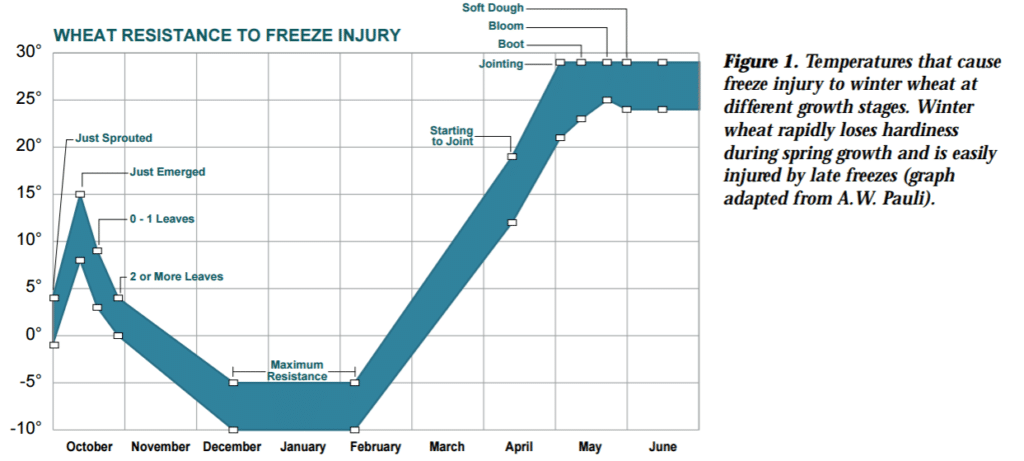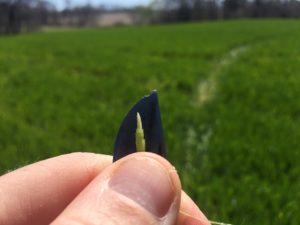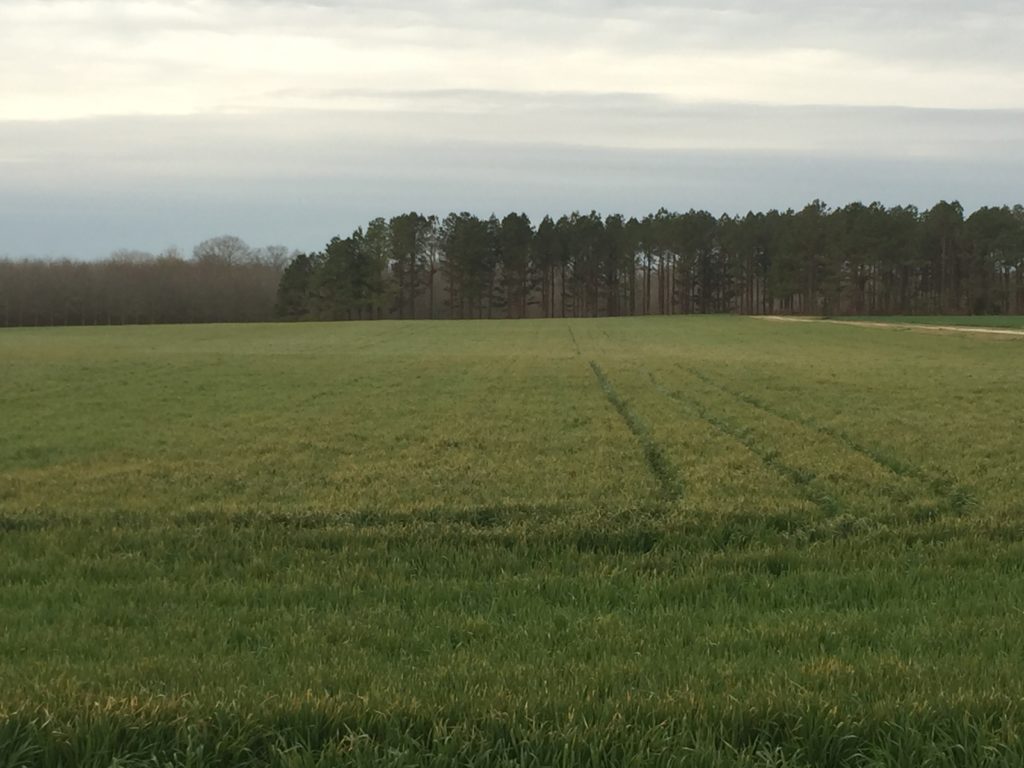For much of Tennessee’s wheat, the cold front which moved through Saturday (March 11th) dropped temperatures near the danger zone. Jointing typically does not occur until late March but our mild winter has allowed much of the timely planted wheat to mature faster than normal. Much of our wheat is between Feekes stages 7 and 8. In the below image, the growing point was located near the knife blade. Wheat becomes considerably less tolerant to cold temperatures after the growing point leaves the base of the plant.
I’ve walked several fields around Medina and Jackson and I believe we may have minimal damage from Saturday’s freeze. Several factors protected our crop. First, the snow and an extremely lush canopy buffered temperatures of the growing point and stem from air temperatures. Second, our soils were near saturation. Soil moisture helps buffer ground temperature from large shifts in air temperature which can also reduce the impact of cold temperatures on wheat. Finally, length of time the temperature remains in a damaging range also impacts level of injury. Air temperature dropped to 27 degrees (in Medina/Jackson) for roughly an hour. Two or more hours below ‘resistant’ temperatures result in the most severe damage.
Although growing points have not been damaged as of yet, Tuesday night and Wednesday night will likely be much worse. I’ve attached a graph from a Kansas State publication entitled, ‘Spring Freeze Injury to Kansas Wheat‘. The attached graph describes temperatures at which injury can be expected. Unfortunately, much of our wheat is well past the ‘starting to joint’ phase and our tolerance is currently much closer to 26-27 degrees. Again, keep in mind that length of time the plant falls below freezing can also impact injury. The graph was constructed assuming two hours of exposure to the low temperatures. Temperatures warmer than graphed can cause injury if the length of time the plant is exposed to low temperatures exceeds two hours. Unfortunately, the forecast for Tuesday and Wednesday nights are much lower than our estimated tolerance levels (21-24 degrees for Jackson).
 Injury at our current growth stage can cause leaf burning, stem splitting, bending, and death of growing points. I have not seen any wheat in boot, but we are quickly approaching that stage.
Injury at our current growth stage can cause leaf burning, stem splitting, bending, and death of growing points. I have not seen any wheat in boot, but we are quickly approaching that stage.
A few days after the injury, leaves will likely twist and begin to turn yellow. Although leaf damage may appear severe, the worst damage will be associated with injury to the growing point. In order to determine level of damage, slice the stem vertically to expose the developing head. An uninjured growing point will appear similar to the one in the below figure; healthy growing points are yellow-green in color and appear turgid. Damaged heads will lack turgid cells around the outside of the growing point and will appear water-soaked. Injury will be worse in tillers that are most mature. 
Review the Kansas State publication for additional information. Hopefully, injury will be localized in lower areas of fields and only a few tillers per plant will be impacted. I will update the blog with information on observed injury and management over the next several days.



Tyson would you mind also touching on freeze damage on oats and Cereal Rye? Maybe a comparison of susceptibility as compared to wheat. I ask because I along with several others grow Cereal rye both for seed production and cover, and also Oats for seed production. Thank you so much for your work and consideration.
David,
Oats generally mature later than wheat which matures later than rye. Since maturity varies, oats will likely be less susceptible to cold injury than wheat. In contrast, rye will likely be more susceptible to injury than wheat. Growth stage for all small grains is the dominant factor in susceptibility. Injury will be similar, with the worst injury associated with damage to the growing point.
Hope this helps,
Tyson